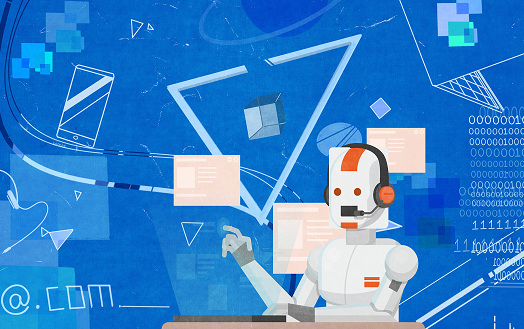

Sustainability is a top priority for all organizations today. According to Europe, one-third of Europe’s largest companies have pledged to achieve net-zero emissions by 2050.
However, the company also found that companies must significantly accelerate their efforts over the next decade, as only 9% of companies are currently on track to achieve this goal.
One of the ways companies can achieve net-zero emissions and solve other sustainability issues is through a combination of digital twins and artificial intelligence.
These technologies provide businesses with unparalleled insights into their operations, which in turn can inform sustainability improvements and help businesses achieve their climate goals.
For example, digital twins can be used to test various scenarios and help companies determine the best strategies to reduce energy consumption and emissions.
Of course, digital twins are already being used in various ways. For example, helping healthcare researchers create highly accurate models of hearts, lungs or other organs to improve clinical diagnosis, education and training.
The energy industry also offers a number of digital twin use cases, including building digital models to guide oil drilling efforts in real time.
But recent technological advances in simulation and modeling capabilities, increased deployment of IoT sensors, and more widely available computing infrastructure mean that enterprises can increase their reliance on digital twins.
When organizations use artificial intelligence to enhance digital twins, additional benefits can be realized. For example, run simulations to investigate "what-if" scenarios and gain a deeper understanding of cause-and-effect relationships.
There are many examples of how these technologies can enhance operations, including their ability to inform a greener world. With that in mind, here are some use cases that demonstrate how digital twins and AI can drive sustainability across industries.
●Smart Industry
By 2025, 89% of IoT platforms will include digital twins, changing the way industrial and manufacturing facilities operate and providing high-precision Insights to enhance sustainability efforts. Examples include:
GE Digital is the first organization to use digital twins and artificial intelligence to improve sustainability. Using autonomously tuning software, the company created a digital twin of the gas turbine to find optimal flame temperatures and fuel splits.
The technology senses environmental and physical degradation changes in real time to facilitate automatic adjustments to ensure the gas turbine operates efficiently with low emissions and low acoustic levels.
With the help of this technology, power plants have achieved a 14% reduction in carbon monoxide emissions and a 10-14% reduction in nitrous oxide emissions.
● Smart Cities
Urban planning, management and optimization is another area poised for transformation through the combined power of digital twins and artificial intelligence.
These smart cities bring many benefits, such as solving food insecurity, increasing mobility, and helping to identify criminal activity. Smart cities also have many contributions to achieving sustainable development goals.
With digital twins and artificial intelligence, city governments can understand, quantify and predict the environmental impact of their decisions, and test potential scenarios to determine which ones are best for the environment.
For example, Transport for London (TfL) is using digital twins to collect data on noise, heat and carbon emissions across the entire Tube network. Before the technology was deployed, TfL staff could only inspect assets when the underground was closed between 1am and 5am.
With real-time network access provided by digital twins, TfL can now assess locations throughout operational hours and also uncover data previously undetectable to the human eye, such as faults, high temperatures and noise hotspots. Officials believe the project will form a key component of Mayor Sadiq Khan's goal of achieving a zero-carbon rail system by 2030.
As carbon neutrality becomes a priority for cities around the world, the use of digital twins and artificial intelligence is expected to increase.
●Smart Buildings
Just as digital twins and artificial intelligence can help cities become more sustainable, they are increasingly being used to create smart buildings.
These technologies ensure sustainability is top of mind from the outset, enabling construction managers and other stakeholders to develop virtual representations to assess a building’s expected carbon footprint during the design phase.
This is the approach taken by developers when designing the Hickman Hotel in London, which has become the first building in the world to receive a SmartScore Platinum rating.
During construction, the digital twin connects to the building management system through various sensors, providing a comprehensive view of data such as occupancy, temperature, air quality, light levels and energy consumption.
Not only does this enable developers to optimize energy performance and reduce carbon emissions, it also sets the framework for future sustainability enhancements, as these can first be simulated through Hickman’s numerical models.
The construction industry is facing increasing regulatory pressure to design greener buildings, so we can only expect more developers to follow Hickman's lead and look at addressing sustainability issues before breaking out into any new territory. Sexual issues.
Over the past few years, becoming a more sustainable industry and ultimately protecting the planet has been an elusive goal. But with recent advances in artificial intelligence and the growing popularity of digital twins, this vision may become a reality.
Now is the time for organizations to harness the combined power of these technologies to gain insights at every stage of their operations to support a more sustainable, less carbon-intensive economy at a micro level – and An overall greener world.
The above is the detailed content of Leveraging digital twins and artificial intelligence to build a sustainable future. For more information, please follow other related articles on the PHP Chinese website!




